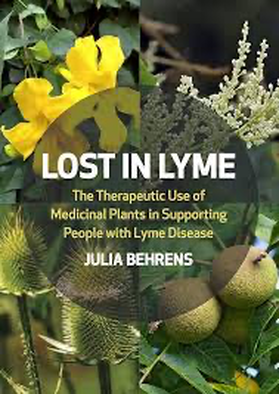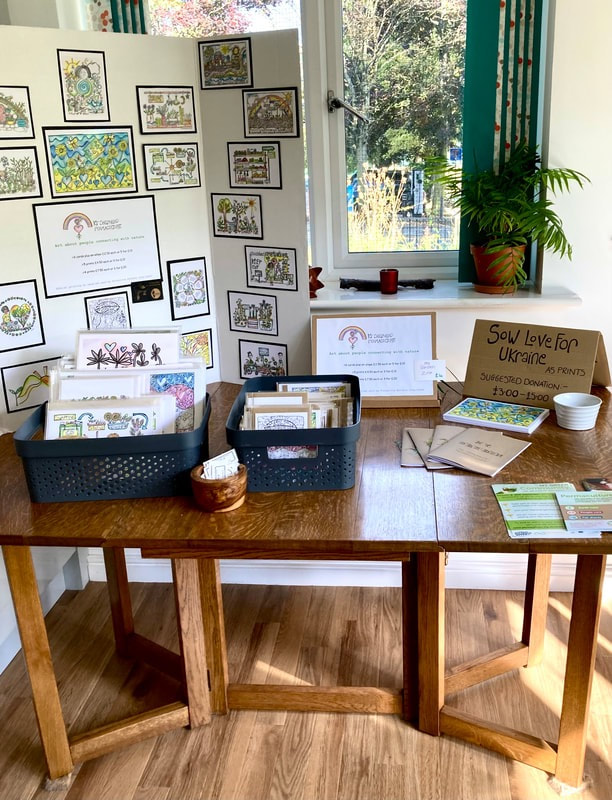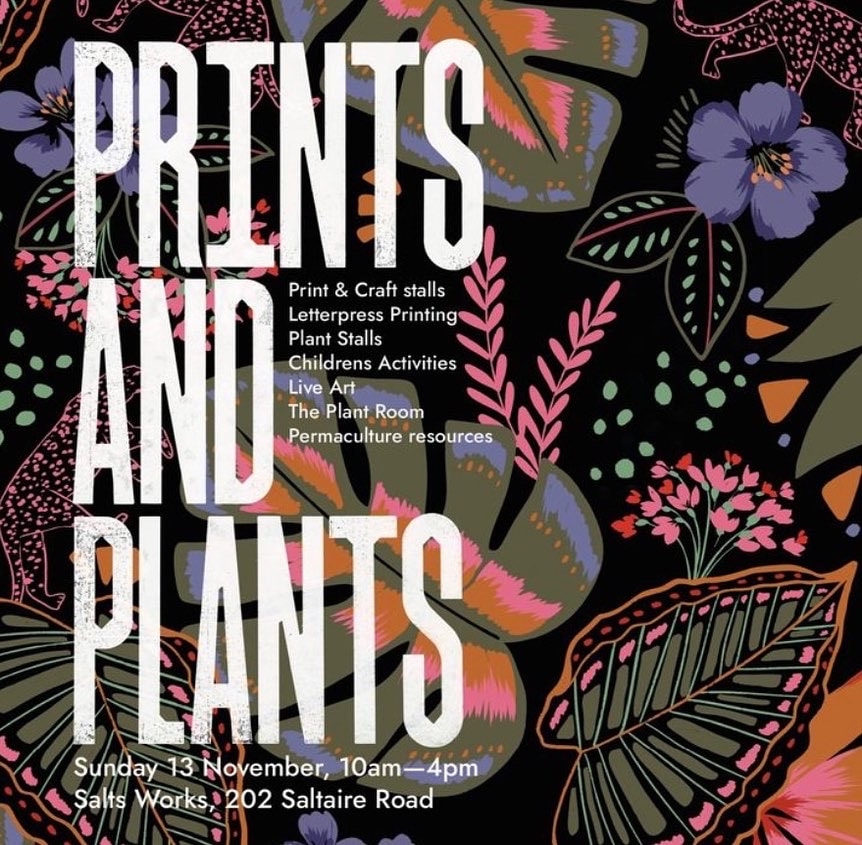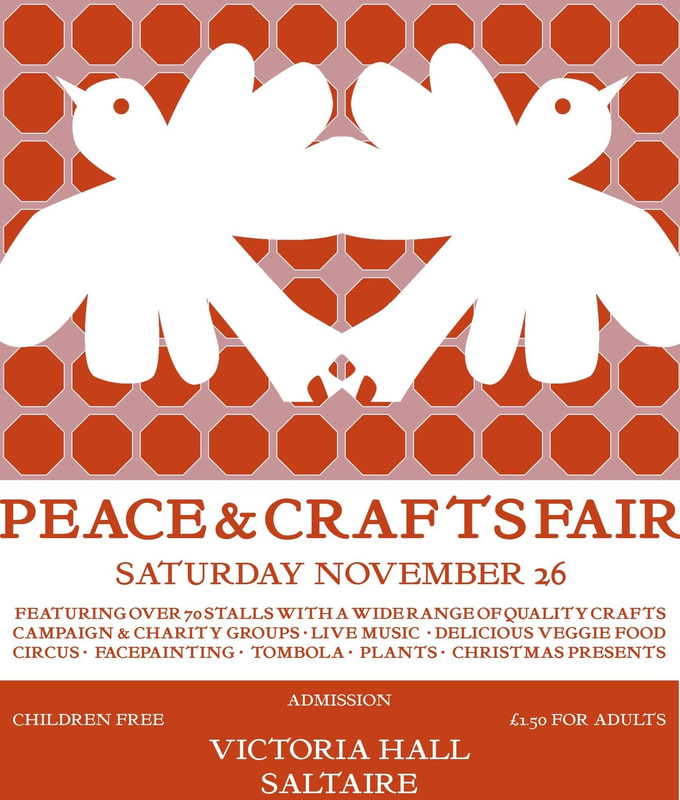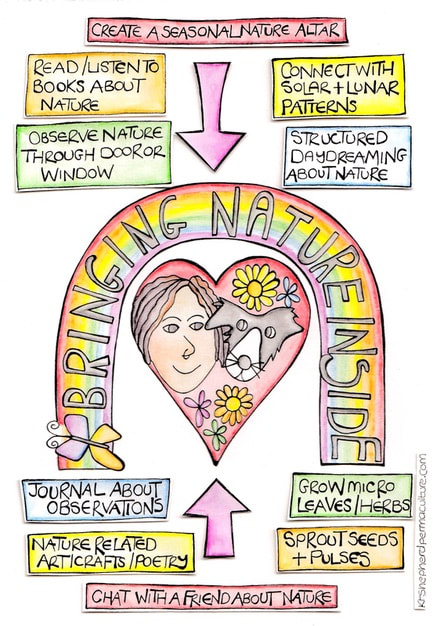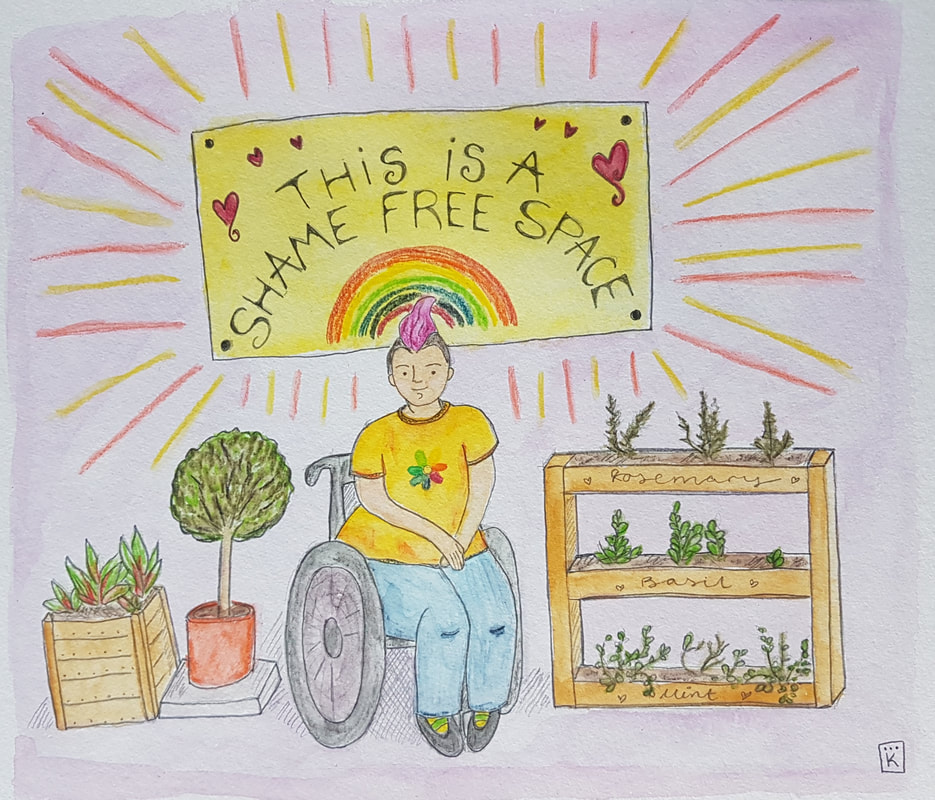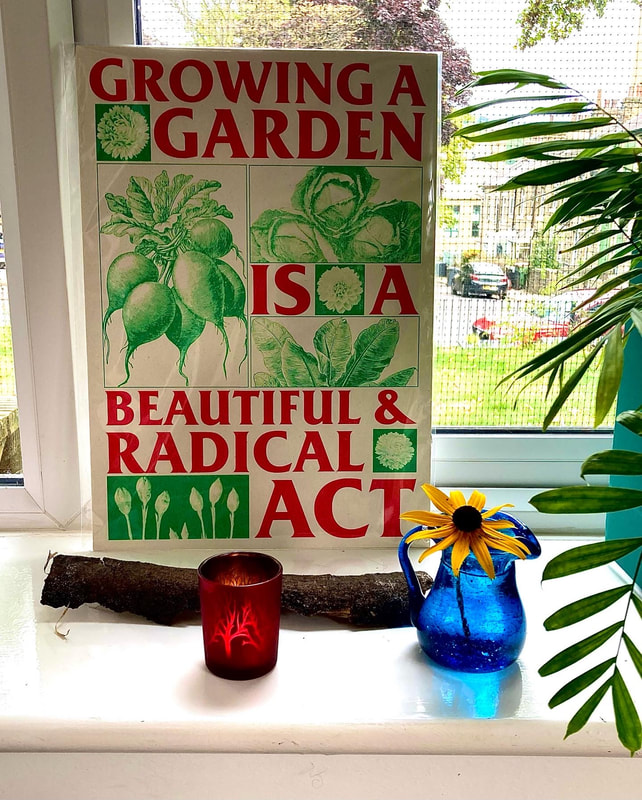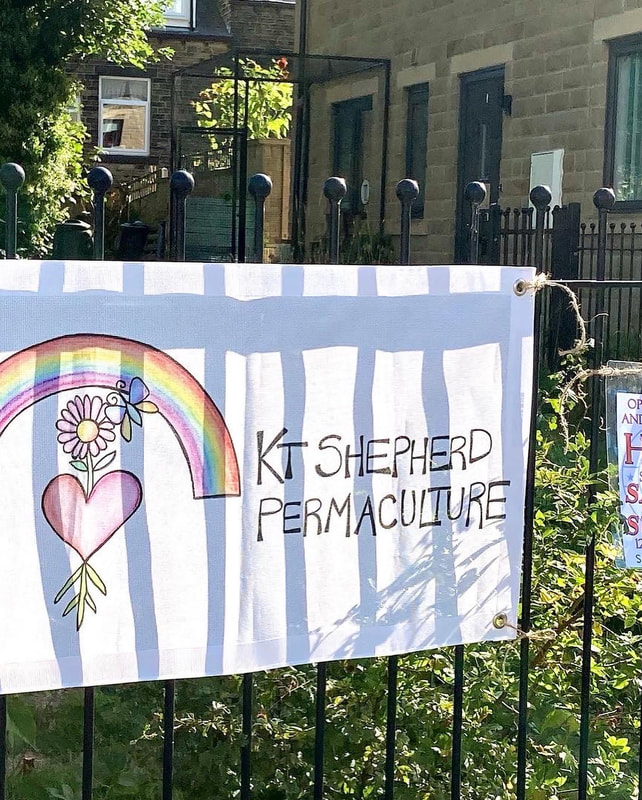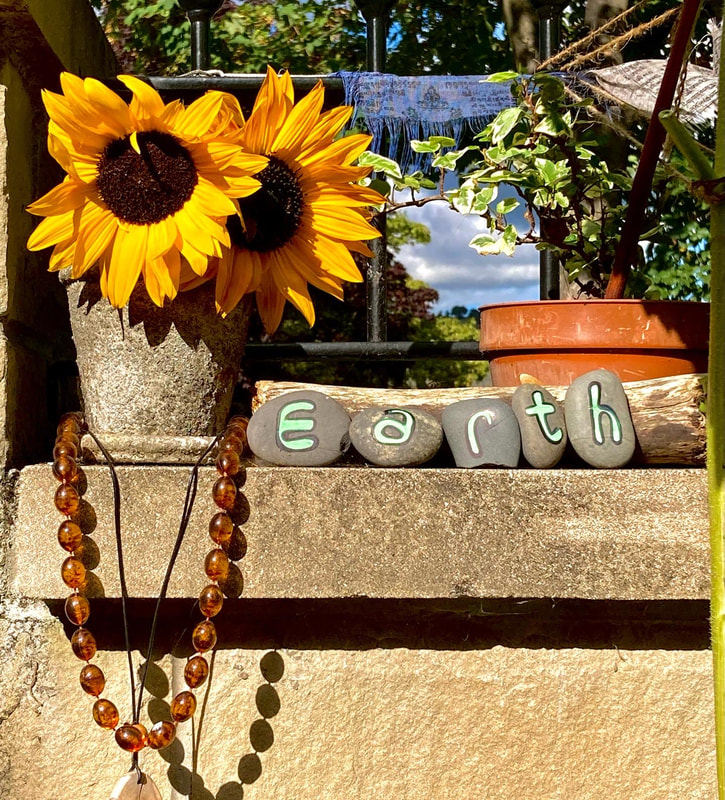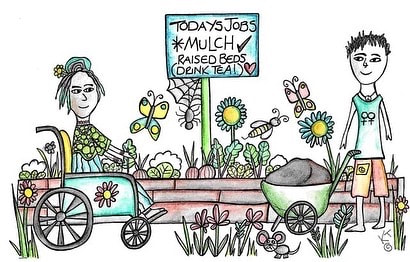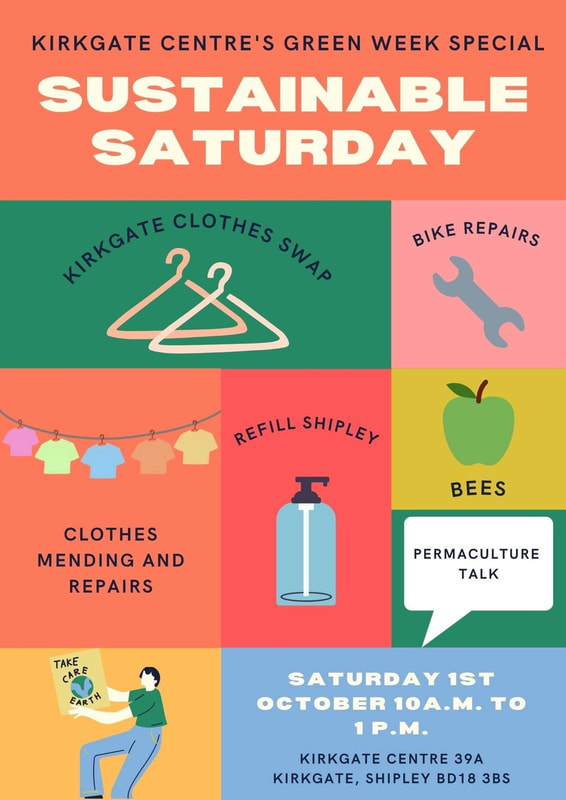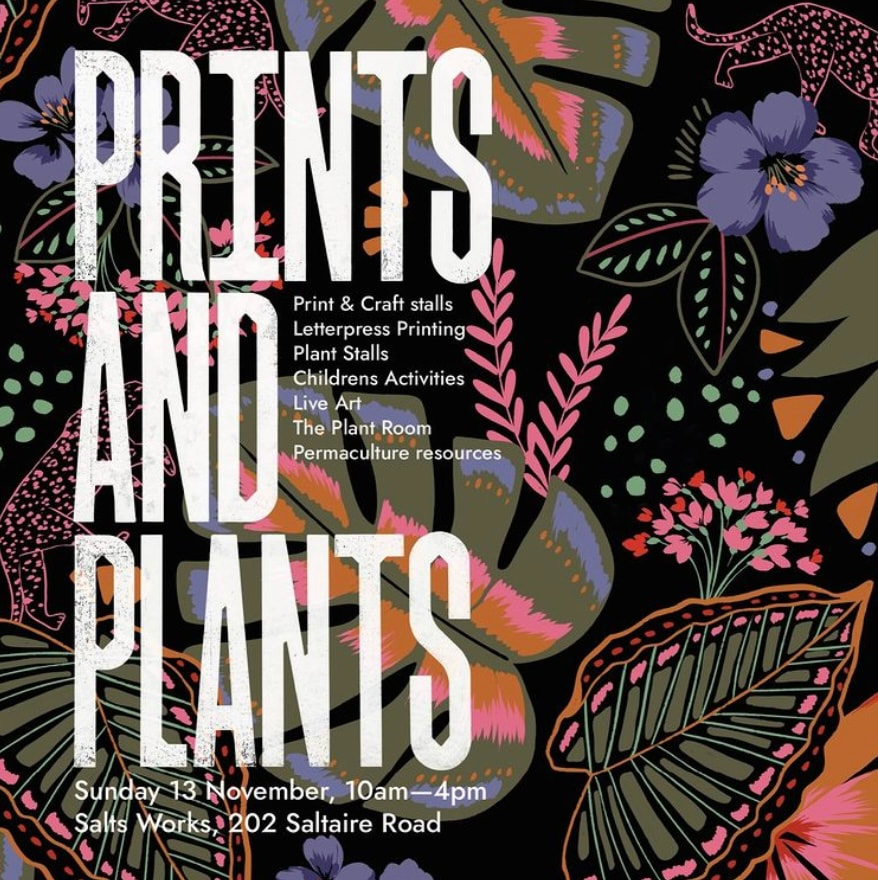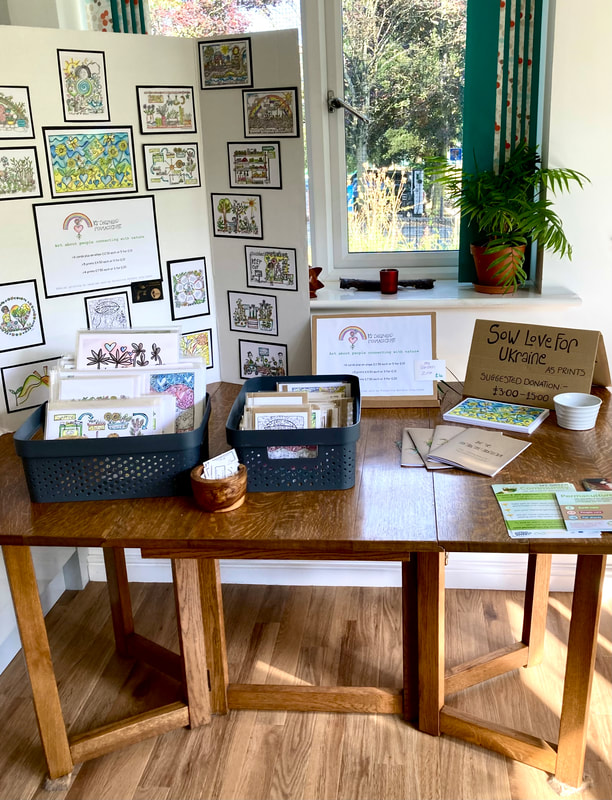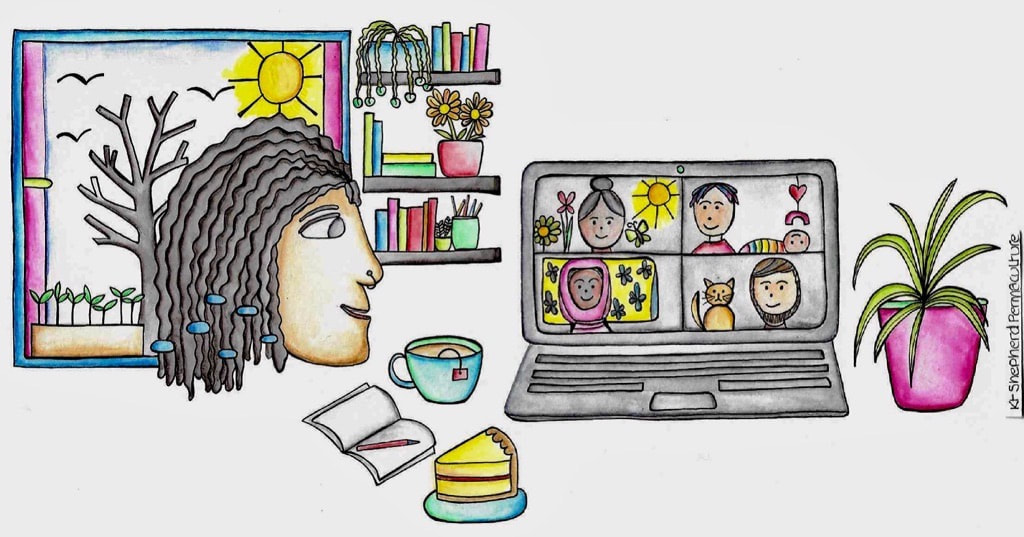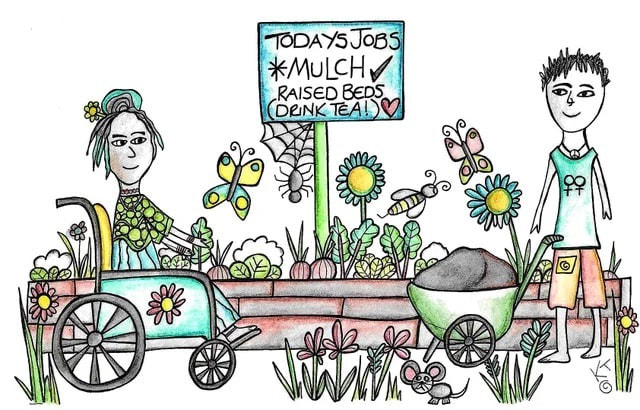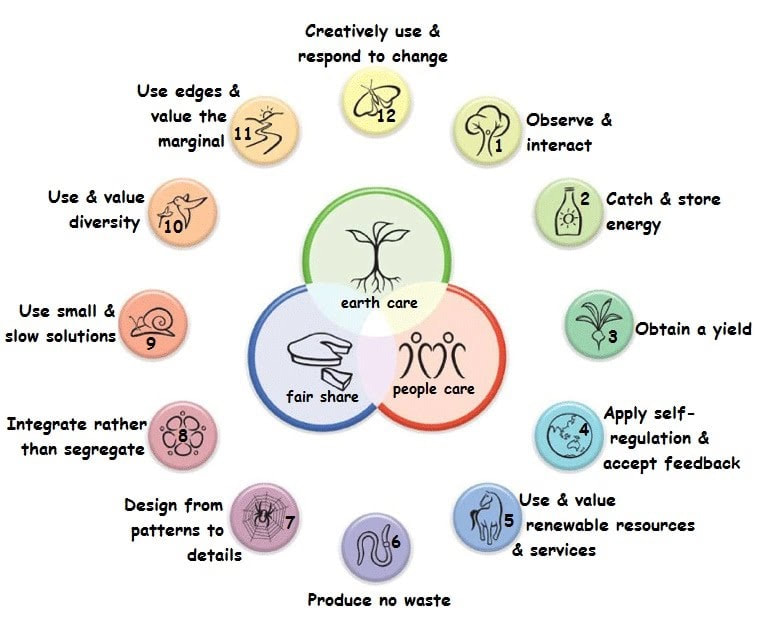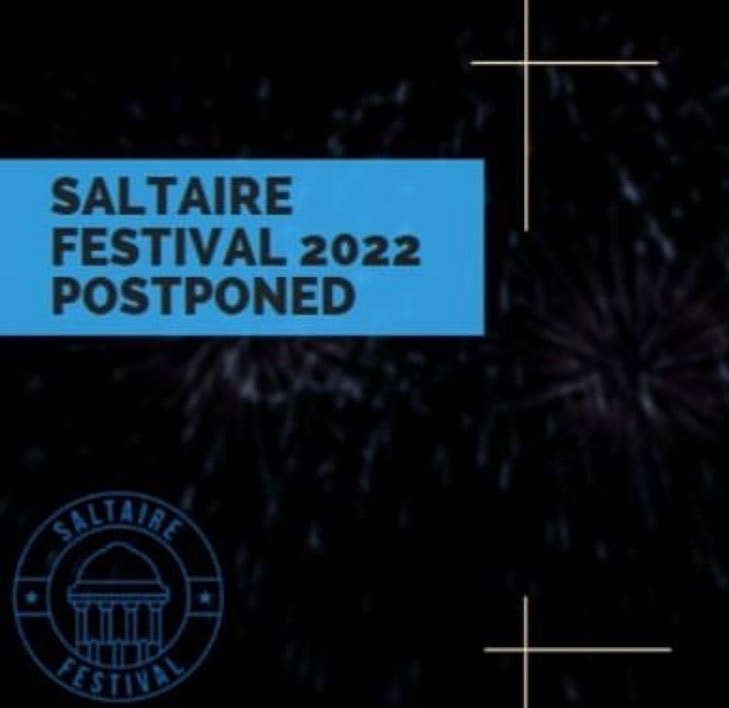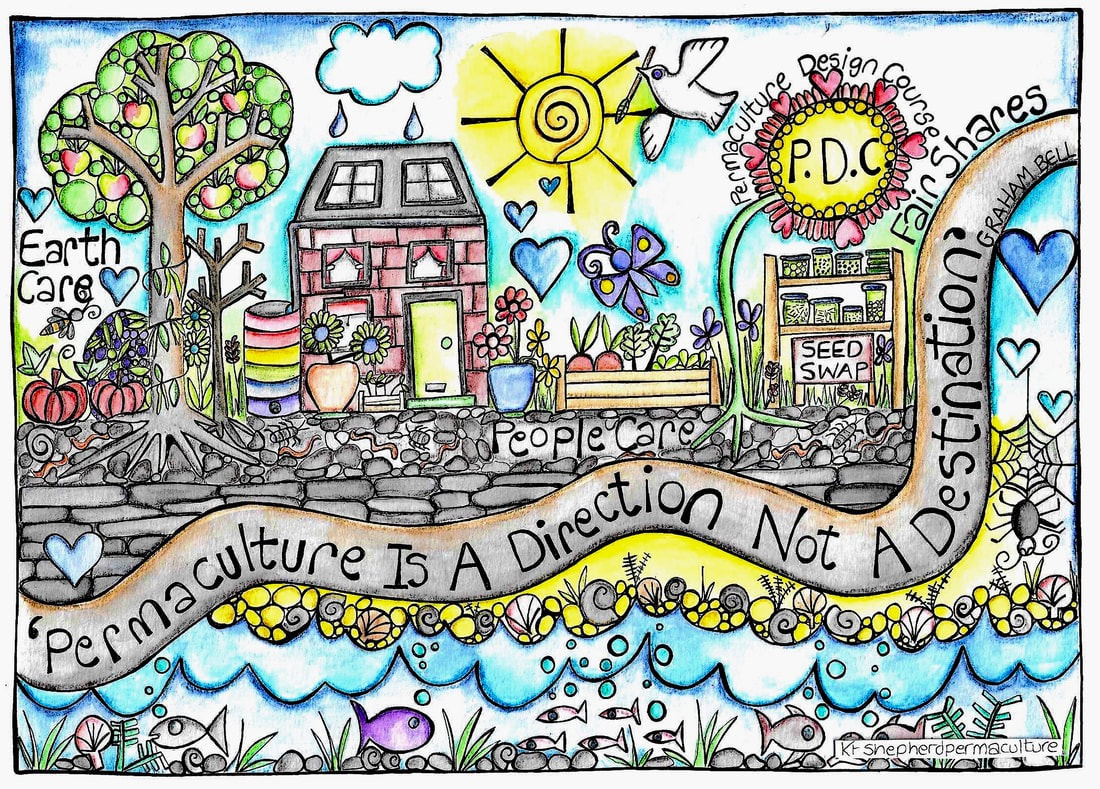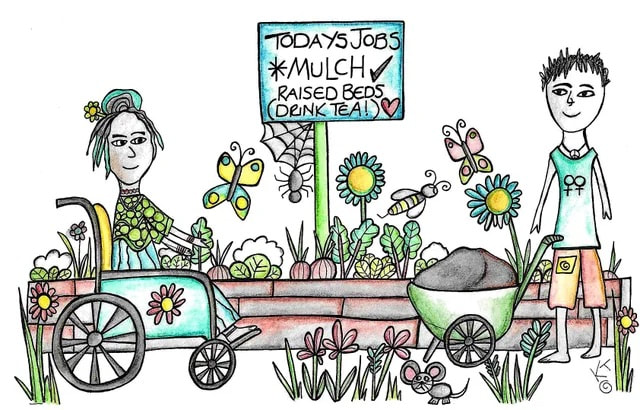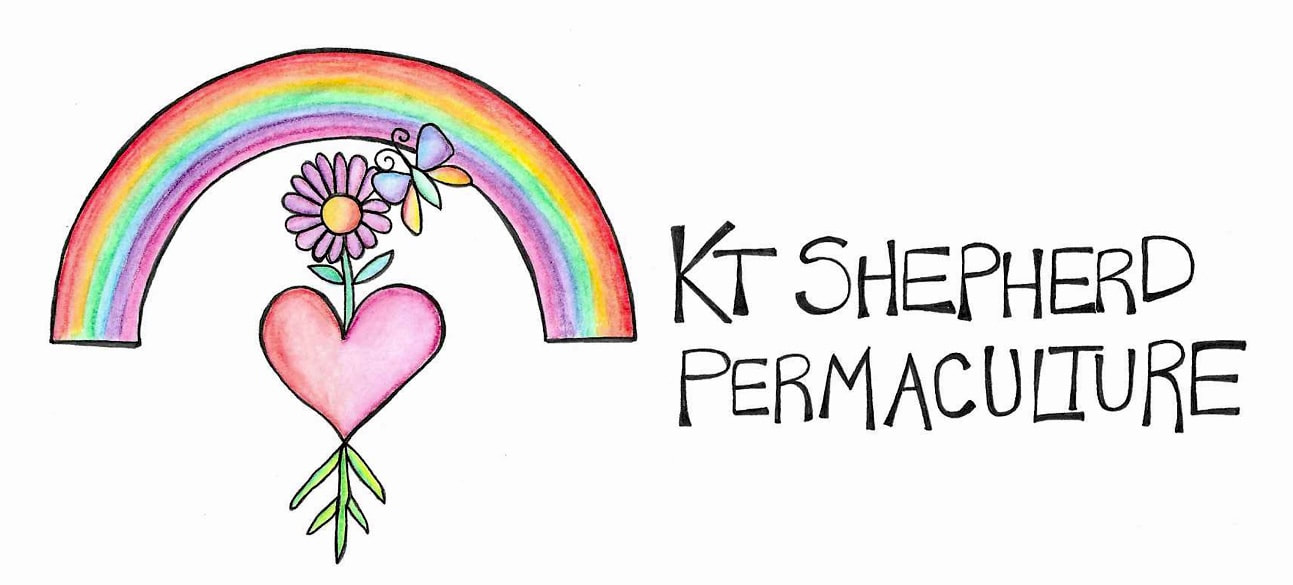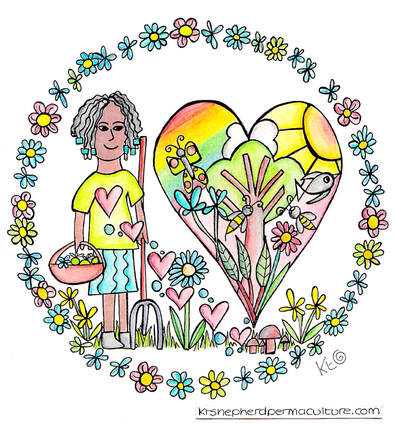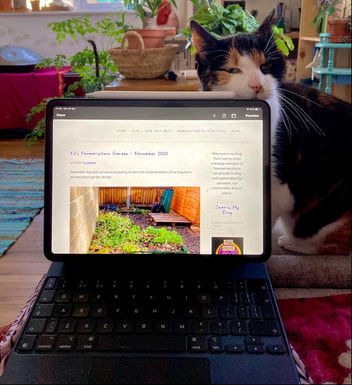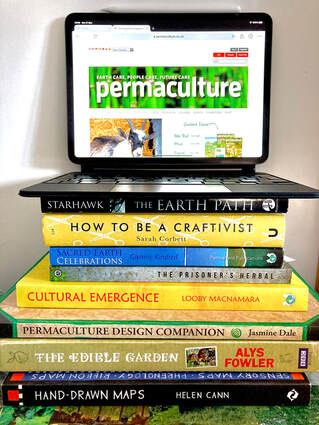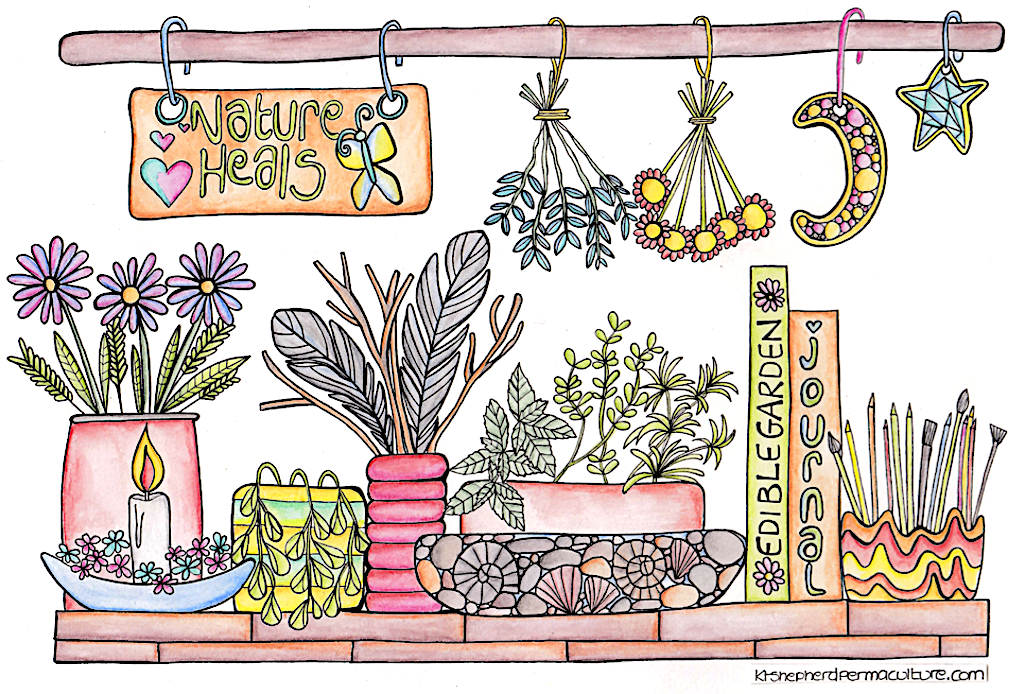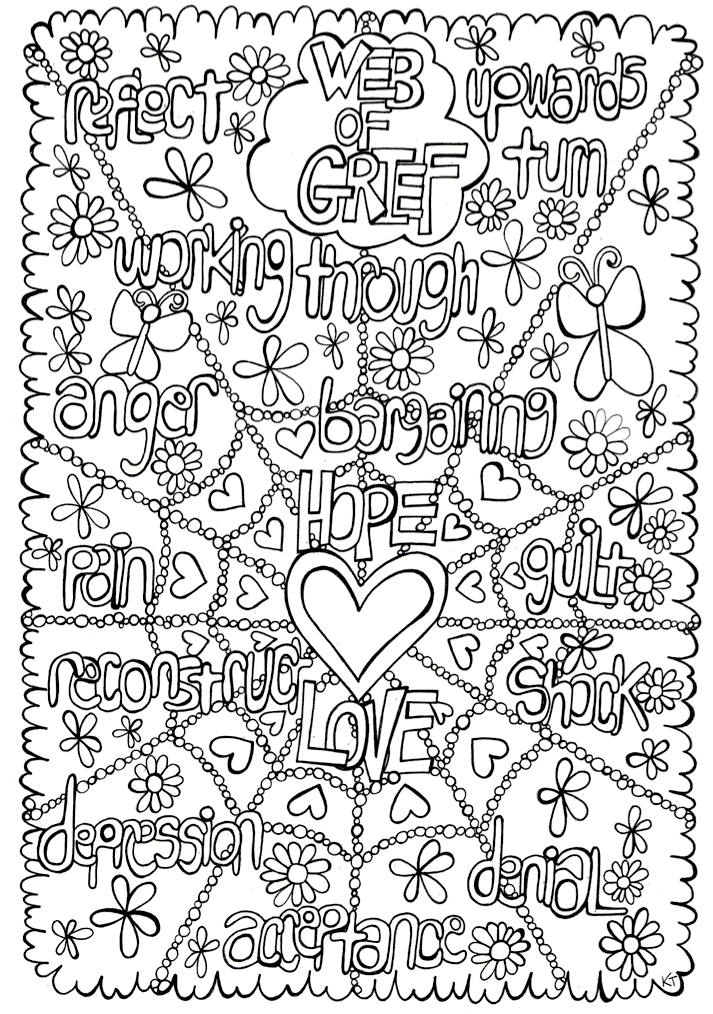Book ReviewLyme disease - Borrelia burgdorferi , is a disease transmitted to humans by infected ticks and found throughout all areas of the UK now in woodlands, fields, parks and gardens. It remains poorly understood by public health systems at a time when the number of people being infected with this multi system illness is rapidly increasing. Patients and practitioners have found it difficult to obtain reliable and effective information, test results and treatment. ‘Lost In Lyme’ sets out to address these challenges and is a welcome accessible tool to inform and empower both people living with Lyme and the health care practitioners treating and supporting them.
‘Lost In Lyme’ by extensively experienced medical herbalist Julia Behrens and chef and nutritionalist Daphne Lambert, is a new, well researched and super accessible resource and practical tool kit. Its format is clearly laid out chapters with short blocks of clear text, photos, diagrams, tables and illustrations which is a big help to those of us with foggy brains, one of the most common long term symptoms of Lyme. Behrens and Lambert’s work includes chapters on; An in-depth introduction to the disease, diagnosing and testing, medical and herbal treatments, (including using herbal treatments to support the use of lengthy courses of antibiotics treatments), plant profiles of herbal treatments, nutrition and recipes, growing herbal treatments in pots and gardens and self care. Included in the self care chapter is Julia Behren’s inspired holistic model, STEPS ( Social, Time, Emotional, Physical, Self), a tool about self awareness of concerns, needs and strengths in living with long term Lyme Disease. As I enter into my seventh year of living with a chronic Lyme Disease diagnosis I am once again incredible grateful for the recovery improvements I’ve made since the early long years of some hugely debilitating symptoms. I continue to experience some long term disabling Lyme related issues though and ‘Lost in Lyme’ is presenting me with new and easily applicable ways to start exploring different ideas for improving some of these
0 Comments
I’m excited to be facilitating a series of 11 workshops throughout 2023, about how to use permaculture design in everyday life situations and events. The 2 hour monthly workshops are taking place at my brilliant neighbours, Salts Works in Saltaire, Bradford. Through relaxed information sharing, creativity and informal discussion, these workshops will enable participants to explore how permaculture can be used to navigate everyday life in ways that connect with our values. Each workshop focuses on a different topic and is created to be enjoyed as a stand alone event or as part of the year long series. Access Places are limited to 10 per booking. Salts Works is accessible for people using mobility aids, including wheelchairs. This includes an accessible toilet. There is also an accessible garden for anyone who needs a break from being indoors. COVID 19 Please feel free to wear a face covering/mask in the workshop, if this gives you the confidence to participate. People are asked not to attend if they have any symptoms of a new bug or virus. Cancellations for a full refund are available until 24 hours before the event. Also Each workshop costs £20. The price include hot/cold drinks, vegan & gluten-free sweet goodies and a takeaway mini zine about the main themes of the workshop. The Workshops - Details & BookingEveryday Permaculture - An Introduction
Saturday 18th February 10.00 - 12.00 Everyday Permaculture - Edible Gardening Saturday 18th March 10.00 - 12.00 Everyday Permaculture - Health & Wellbeing Saturday 15th April 10.00 - 12.00 Everyday Permaculture - Wildlife Spaces Saturday 20th May 10.00 - 12.00 Everyday Permaculture - Climate Actions Saturday 17th June 10.00 - 12.00 Everyday Permaculture - Designing Events Saturday 15th July 10.00 - 12.00 Everyday Permaculture - Right Livelihoods Saturday 19th August 10.00 - 12.00 Everyday Permaculture - Caring For Others Saturday 15th September 10.00 - 12.00 Everyday Permaculture - Death, Dying & Bereavement Saturday 21st October 10.00 - 12.00 Everyday Permaculture - Winter Festivals Planning Saturday 18th November 10.00 - 12.00 Everyday Permaculture - Designing 2024 Saturday 16th December 10.00 - 12.00 Please feel free to email me if you have any questions about these workshops Here is a little update about events I am participating in over the next few weeks Local Creative FairsI’m so pleased to be participating in the above creative events this month, all of which are within a ten minute walk from my house. I’ll be selling my cards, prints and zines along with permaculture books and other resources by Graham Burnett, Pippa Chapman, Twigs Magazine and (free copies!) of Permaculture Magazine. As always I’ll also be happy to chat about most things permaculture related! Thriving With Principles (Online Project) - An UpdateThriving With Principles is a design that Diploma apprentice, Kate Dickinson and I are collaborating on. Its a design about sharing and celebrating the voices, knowledge and experiences of permaculture designers using permaculture theory and practice to thrive while living with disabilities from chronic illness. We are at the stage of evaluating the first part of the design and are getting excited about where this will lead in the months ahead. Check out Kate’s Instagram space for more of their creativity and wisdom
As I continue to slowly recover from the long term impact that Lyme disease has had on my body, so the number of permaculture educator events I am able to be involved with are increasing. This makes me very happy! Here is a little round up of past, present and future happenings in my little corner of Earth. Last month I took part in the Saltaire Festival Open Gardens & Pop-Ups event for the first time. I loved the preparation for it and the weekend itself. It pushed me into trying out some new creative ideas in my garden which have worked out really well. I also won the ‘highly commended’ (runner up) prize, which I was SO pleased, (and surprised!), about. My open garden was also part of the Permaculture Association’s My Green Community event which saw permaculture projects opening their doors/gates to visitors throughout the UK A new project, ‘Thriving With Principles’, I am working on with one of my Diploma apprentices, Kate Dickinson also started last month. Thriving With Principles (TWP), is a permaculture project documenting and sharing about how permaculture principles can enable people affected by disability and/or chronic illness/long term health issues (CI/LTHI), to thrive. Its a series of online discussions through Zoom, then the creation of a zine. The first two Zoom sessions far exceeded our expectations of how much discussion would emerge from all of the wonderful people attending, so we have organised a further three Zoom sessions to take place this month, before Kate starts on their zine design. Click here for further information about TWP - you are very welcome to join in with the October Zoom sessions Earlier this month I facilitated my first ‘in person’ permaculture workshop since I became poorly six years ago. The hour long ‘brief introduction to permaculture’ was part of the bigger Sustainable Saturday event hosted by my local community centre, the Kirkgate Centre. I really enjoyed being back chatting about how permaculture can be applied to so many of our everyday life and work experiences. There was a lot of enthusiasm from the people attending for further workshops, and this is something I am going to be exploring for next year. Next month I’m very much looking forward to two creative events less than five minutes shuffle from my home! I’m going to be selling my prints, cards and zines and hosting a permaculture resource space at ‘Prints & Plants’, at the amazing Salts Works & People Powered Press on Sunday 13th November. I will also be having a stall at the Peace & Craft Fair hosted by the Yorkshire Campaign For Nuclear Disarmament at the Victoria Hall here in Saltaire on Saturday November 26th. Online discussions through Zoom, then the creation of a zine, hosted by Kate Dickinson and myself. Take part in a permaculture project documenting and sharing about how permaculture principles can enable people affected by disability and/or chronic illness/long term health issues (CI/LTHI), to thrive. This project is aimed at both people living with disabilities and/or CI/LTHI and/or people supporting others living with disabilities and/or CI/LTHI Following the success of the first two Zoom sessions, we are hosting a further three one hour sessions, throughout October. Tuesday 11th October 10-11am Saturday 22nd October 2-3pm Sunday 30th October 10-11am All sessions are are UK timings. You are welcome to attend any number of sessions. You are also very welcome to attend these sessions if you didn’t participate in the September sessions. We are inviting participants to share experiences they have had or ideas about, using the Holmgren Permaculture Principles in managing their disabilities and/or CI/LTHI and/or supporting someone else with disabilities and/or CI/LTHI. This link features more information about each of the 12 principles
Permacultureprinciples.com Ways of sharing these experiences and ideas with others in the session might include - Talking Sharing an image (photo, doodle, illustration, mind map) Written/typed so that Kate or Kt can share on your behalf Participants will also be encouraged to discuss these experiences and ideas in the sessions. There is no pressure to either share or discuss in the sessions. People who want to attend the sessions and just listen in are very welcomed. The Zoom sessions will be recorded and then the content shared about experiences and ideas will be collated and used to create a zine which will be available to others as a resource. The zine will be available in both electronic and paper versions. The zine content can be anonymous or participants can be named and attributed to their experiences and ideas - either preference is great. In the week after the Zoom sessions finish, you will be asked to complete a short evaluation tool so that we can learn from the experiences of participants and plan future events accordingly. We will be sharing information about this project on social media and on Kt’s blog and newsletter Please email Kt if you would like to take part in this project - remember it’s totally fine and very welcomed to just listen in to the ideas sharing and discussion. Also, feel free to email me with any questions you may have. [email protected] If you have already attended the initial sessions I will automatically be sending you an email with the link for the Zoom sessions. Saltaire Festival has been postponed for two weeks and this means that my ‘Open Garden’ as part of the festival and the My Green Community event by the Permaculture Association has also been postponed. I’ll be posting details of the changed dates here in and on my social media when they are confirmed. I’m taking part in the ‘Open Gardens & Pop-ups Trail’ event happening over the first weekend of Saltaire Festival in September 2022. Come and visit my garden in central Saltaire, where I am using permaculture design to create a space where both people and the wildlife we are connected to, can thrive. I’m having a pop-up shop selling cards, prints and zines of some of my permaculture themed illustrations from my kitchen, (accessed through my garden), too. I will also be doing short online tours of my garden through Instagram live over the weekend - more details about times will be shared closer to the event. You can connect with me on Instagram at @KtShepherdPermaculture My garden and kitchen are accessible for people using wheelchairs and there are garden benches available to sit on in the garden. Children are very welcome and will need supervising by an adult visiting with them. Dogs on leads are also very welcome and there will be water, (and possible some Scooby snacks!), available for them. More information about the ‘Open Gardens and Pop-Ups Trail’ can be found in this link. Including the map of the trail Saturday 10th September 12-4.30pm Sunday 11th September 12-4.30pm My open garden and shop event is also part of the ‘My Green Community - a celebration of practical permaculture’ event being organised by Kathryn Baker at the Permaculture Association. An online discussion through Zoom, then the creation of a zine. A project by Kt Shepherd & Kate Dickinson. This is timed to connect with the Edges of both the Festival Of Permaculture and My Green Community events from the Permaculture Association in September 2022 Take part in a permaculture project documenting and sharing about how permaculture principles can enable people affected by disability and/or chronic illness/long term health issues (CI/LTHI), to thrive. This project is aimed at both people living with disabilities and/or CI/LTHI and/or people supporting others living with disabilities and/or CI/LTHI We will be hosting 2 x 1 hour Zoom sessions over the weekend of 17/18th September. The Saturday 17th September session is at 10-11am The Sunday 18th September session is at 3-4pm Both sessions are at BST (British Summer Time) timings You are welcome to attend either or both sessions We are inviting participants to share experiences they have had or ideas about, using the Holmgren Permaculture Principles in managing their disabilities and/or CI/LTHI and/or supporting someone else with disabilities and/or CI/LTHI This link features more information about each of the 12 principles Permacultureprinciples.com Ways of sharing these experiences and ideas with others in the session might include - Talking Sharing an image (photo, doodle, illustration, mind map) Written/typed so that Kate or Kt can share on your behalf Participants will also be encouraged to discuss these experiences and ideas in the sessions. There is no pressure to either share or discuss in the sessions. People who want to attend the sessions and just listen in are very welcomed The Zoom sessions will be recorded and then the content shared about experiences and ideas will be collated and used to create a zine which will be available to others as a resource. The zine will be available in both electronic and paper versions. The zine content can be anonymous or participants can be named and attributed to their experiences and ideas - either preference is great. In the week after the Zoom sessions you will be asked to complete a short evaluation tool so that we can learn from the experiences of participants and plan future events accordingly. We will be sharing information about this project on social media, on Kt’s blog and via the Permaculture Association’s website events notice board Please email Kt if you would like to take part in this project - remember it’s totally fine and very welcomed to just listen in to the ideas sharing and discussion. Also, feel free to email me with any questions you may have. [email protected] Apologies. I’ve definitely been a bit A.W.O.L. In recent months, both from my blog and Full Moon newsletters. At the end of last year I outgrew my marketing package from Weebly, my website host and decided that while I upgraded I would take the opportunity to give my website a much needed update too. Living with a chronic illness means that unplanned times of rest are often a thing and none essential activities can get delayed in a big way, which is what happened with me. However, here I am again with my website updated, a new blog/newsletter design underway and some great plans for my online spaces over the next few months. Here is a little overview of what you can find on my website now: - About Me and My WorkAn overview of my different Permaculture Educator projects: - Permaculture Illustrations, Blog, Permaculture Diploma Tutoring, Accessing Permaculture, Permaculture Resources and Social Media Permaculture IllustrationsDetails about my Free To Use illustrations, examples of some of the recent commissions I have undertaken and a link to my Etsy shop where some of my older Illustrations are available as cards and prints. Over the next few weeks I will be opening a new shop for cards and prints of my illustrations on my website. Sign up to my full moon news letter and connect with my social media spaces for updates on this My BlogEveryday examples of how permaculture can provide healing and regeneration for ourselves, our communities and our planet. Permaculture Diploma TutoringInformation about my work as a tutor for the Permaculture Association (UK) Diploma in Applied Permaculture Design Accessing PermacultureSome resources designed to help and support improving access to Permaculture, (and other activism type work/events), for people with chronic illness and/or disability. ResourcesSome of my favourite permaculture related resources : - websites, blogs, podcasts, books and videos Keep Up To DateTo keep up to date with my various Permaculture Educator projects then sign up to my Full Moon newsletter and connect with my social media spaces
For many people the sudden arrival of the Coronavirus Pandemic has meant significant changes in how we live our lives. As the weeks pass it is becoming more evident that in the UK, as in many other places in the world that we will be living with some level of “lockdown” situation for many more months, possibly longer. From my own observations and listening to the stories of others, there are many similarities and parallels about life respecting the lockdown rules and managing the impacts of the overwhelming loss related to the pandemic, and my experience of being mainly housebound while living with long term illness over the last few years. In the early months of my diagnosis with late stage Lyme Disease I used aspects of permaculture design to create a life that, although very different from my life prior to becoming seriously unwell, I could continue to thrive in. I have now easily been able to adapt these ideas to both enhancing my own experience of lockdown and also supporting others around me to be able to adapt as well as possible. Here I share some of those ideas. ● I use The Design Web by Looby Macnamara from her book People and Permaculture (2012) to design the pattern of my days. I can really recommend spending some time on creating a template for this, which can then be used as the structure for each day to add detail to according to the different activities and priorities of each individual day. ● I spend time on a regular basis acknowledging the loss, grief and various emotional states associated with this, relating to how Covid 19 is impacting on our lives. Also how this can compound other loss in my life too. Gently accepting and reminding myself about the fact that fast changing sways of emotion are in fact grief and connecting with others about this can mean that the emotions don’t become overwhelming as often. ● Connection and integration with other people, (while physically distancing, but demonstrating social solidarity!) to support each other through the Pandemic, but just as importantly to focus and talk about other meaningful topics again to avoid being emotionally overwhelmed, is also a valuable tool. ● I use reflection a lot - a mini reflection at the end of each day, a more detailed one at the end of each week and then an in-depth time of reflection at each Earth festival. It really helps to have these periods of reflection with other people who know me well too, a bit like “life supervision”. Referring back to the daily pattern template above during the reflective time means that I can creatively make changes as needed on a regular basis. Regular reflection helps me to value my achievements however small, even on the most difficult days. Being able to identify potential for new projects or positive habits enables more flow and growth in my life too. ● Creating a journaling tool to record ideas, gratitude and event memories is a really positive strategy. The fast changing pace of the changes involved with the Coronavirus situation and the media responses, means that it can be difficult to focus on aspects of life not related to the crisis and this in turn can lead to feelings of being overwhelmed and potential burnout. Using the permaculture principle of catch and store energy, in making a physical space to record actions and thoughts really helps to focus on solutions and regenerative ways forward. ● I use the permaculture tool of Zoning to help to connect with the things in life which give me meaning, even though the ways I can do this are often very different from before. This means that I can decide on an activity based on any limitations that the effects of the Coronavirus lockdown are having on my life at any particular time. For example – one of my main projects on the go is the design and creation of a new edible garden. Zone 0 activity related to it is to have dedicated thinking/daydreaming/mind mapping time, Zone 1 to listen to a podcast or audiobook about edible gardening, Zone 2 to read a book or watch a video about edible gardening, Zone 3 to chat to a friend or on a forum about gardening, Zone 4 to actually spend some time on practical gardening activities and Zone 5 to visit other edible gardens/allotments in my local community. ● Over recent years there has been many studies demonstrating about how beneficial nature connection is to our physical, emotional and spiritual health. I designed ways in which I could connect with nature when my health was at its most difficult and I spent many months in bed. One of the most effective ways I maintained this essential part of my life was to create a space in my bedroom to display objects and other representations of patterns in nature. I wrote in more depth about this in this here . Although now, through significant improvements in my health, I have the privilege of being able to spend time in my garden and enjoy daily walks in my local park, I realise that not everyone has access to this either geographically and/or because of needing to self-isolate or shield because of Covid 19. Having an inside space dedicated to connection with nature, continues to be a constant vital aspect to my holistic wellbeing. ● Growing food is also something that gives me and many other permaculture practitioners really significant meaning in life – I’m really lucky to have the space and health to be able grow food in my garden now and as the Coronavirus lockdown commenced in March I started a design for my edible garden. Throughout the difficult times of my illness I was able to grow food on windowsills in the house – sprouted seeds and pulses, herbs and chilli plants – and I still do as these ways of growing give me fresh home grown food each day of the year which is hugely impactful to my holistic wellbeing. ● I timetable a regular space in each day to intentionally “pause” and take a break from whatever else is going on in the day. For me this means 10-15 minutes of grounding, through awareness of my senses and purposefully connecting to Earth – I also found this tool really useful to use at any time that feels overwhelming too. This short time away from whatever else is happening in my day nearly always enables me to regain a healthy sense of control and is helpful when changes are happening quickly, such has been the case with the Coronavirus crisis. These are some of the life tools, inspired by permaculture, I have been using and adapting over the past few years to stay as holistically healthy as possible. I hope that you have found some inspiration here in my ideas for your own self-care in these times of Covid 19. An edited version of this article also appears in Permaculture Magazine Autumn 2020 (No. 105) - If you have the financial means I can strongly recommend subscribing to this wonderful quarterly publication. As well as the magazine, Permaculture Magazine website has masses of free permaculture related content plus a wonderful YouTube channel
There is a lot of grief in our communities right now. Grief related to so many aspects of the Covid 19 crisis. Grief related to our damaged Earth. Grief relating to people close to us who are dying and who we can't be alongside. Anticipatory grief. Actual grief. Complex grief.
I made this colouring-in page about the web-like pattern and aspects of grief that often form in our lives. Please feel free to print off and colour in/doodle on. Click here for a PDF version to print from. If you want to read more about different types of grief and practical, creative ways of living with so much loss then I can recommend the blog at What's Your Grief as a good place to start. |
Welcome to my blog. Here I aim to share everyday examples of how permaculture can provide healing and regeneration for ourselves, our communities and our planet.
Search My BlogSign up for my monthly newsletter, Full Moon Flourish. Here I will be sharing updates about my creative permaculture projects, plus links to inspiring work from other women in permaculture.
Archives
May 2024
Categories
All
|
